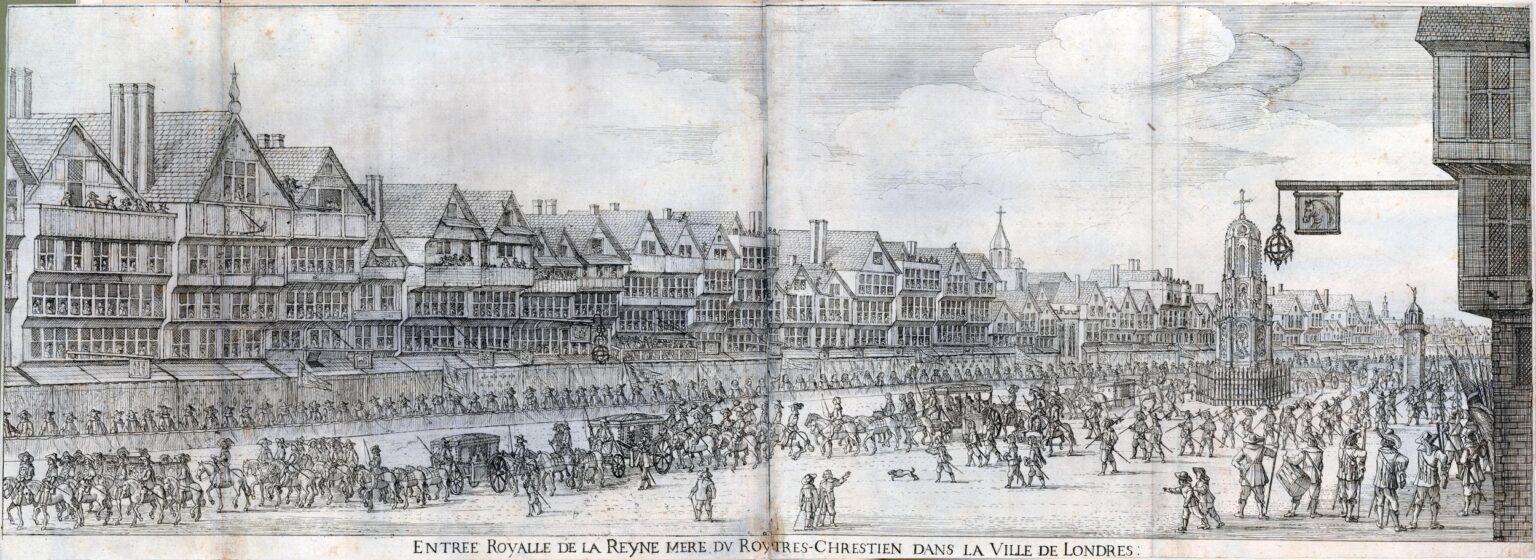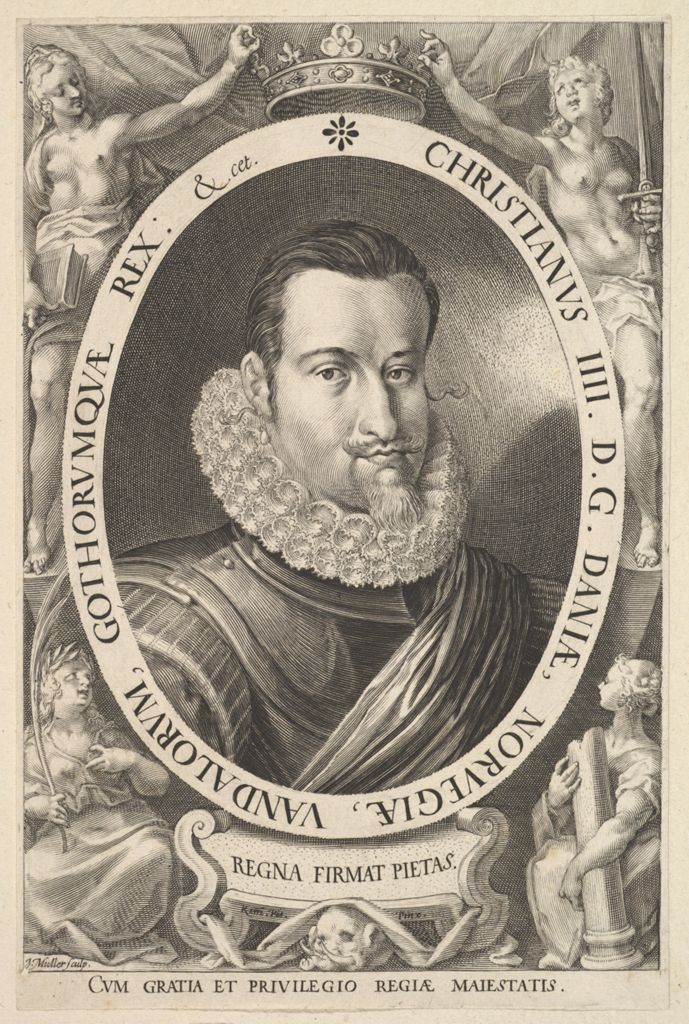
On this day in 1606, Christian IV of Denmark with his brother-in-law of James I of England (and VI of Scotland) entered London as part of a lengthy state visit and processed through the city to great pageantry.
On the 21st, the Livery companies had received a precept from the Lord Mayor ordering them to prepare for the procession, with instructions to:
'...provide yor rayles in a readines for the livery of yor company to stand in and to be sett up in the streetes...And likewise that yor railes against that tyme be hanged with blew azure cloth & garnished with Banners & streamers in the most bewtifull manner that may be, as formerlie in like solempnities hath bin accustomed. And that you likewise have and provide sixe whifflers at the least to evry score of yor livery well apparrelled with white staves in their handes to stand with their backes to the Common railes over against your yor Companies railes for the better and quieter ordering of the streets through which his majestie shall passe. And hereof faile you not at yor perill.'
Henry Roberts, writer and poet, wrote a detailed account of the state visit including a description of the City procession, with the Royal parties, attendants and guards riding 'til they came to Cheapside: al the way as these two famous Kinges passed from the Tower-hill, stood the Companies of London, in their Lyue∣ries Gownes, and Hoodes: for whom there was Places double rayled; which was hanged with blew Broad-cloth; and the Rayles garnished with Aunci∣ents very richly guylt with the Kinges Armes of England; the Auncients of Silke of each Hall, with Streamers and Pendants of their Armes, and seue∣rall Fellowships, the better to be knowen.'
Sidney Young in the Annals of the Barber Surgeons tells us that Christian IV was 'sumptuously entertained' on his visit. Sir John Harington (godson of Elizabeth I) gave a comically exaggerated and less than flattering account of the excesses of one these entertainments (a masque hosted by Sir Robert Cecil at Theobalds House) and its participants, in sharp contrast to the stately procession described by Roberts.

The ‘rayles’ or 'railes' referred to in the Mayoral precept and Roberts' description were wooden frames inside which the company stood during the procession, often with an additional public rails which acted much like modern crowd barriers. Company rails can be seen in the 1616 image above of Marie de Medici's procession along Cheapside. These frames were kept and maintained by each Company, along with the clothing, staves and flags required of the whifflers.
'Whifflers' were responsible for keeping order amongst the crowds and appointed from within the ranks of the Livery companies for events such as coronations, Lord Mayor's Show and state visits such as that of Christian IV. Records of those appointed whiffler, fines for those who refused to serve and costs for their equipment appear in the Company's records of this period. How they might have appeared on official occasions can be seen below in the 1616 image of the Fishmongers flag-bearers.

Further reading:
The Annals of the Barber-Surgeons of London, Sidney Young, London 1890, pp.114-115
'The Most royall and Honourable entertainement, of the famous and renowmed King, Christiern [sic] the fourth, King of Denmarke,' Henry Roberts, London 1606
'Pageantry and power: A cultural history of the early modern Lord Mayor’s Show, 1585-1639' Tracey Hill, Manchester University Press 2017
'Giving an account of the entertainment that King James had prepared for the King of Denmark, which failed, from the intemperance of the assistants and their royal auditor' in Nugae Antiquae: Being a Miscellaneous Collection of Original Papers, John Harrington, first published 1769, revised edition 1804
